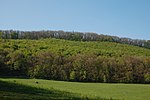Gugging
1889 establishmentsAktion T4Art museums and galleries in AustriaArt therapyFormer psychiatric hospitals ... and 3 more
Museums in Lower AustriaOutsider artPsychiatric hospitals in Austria

The Maria Gugging Psychiatric Clinic was a psychiatric institution located in the suburb of Maria Gugging on the outskirts of Vienna, Austria. During the Nazi era hundreds of mental patients were murdered or abused at Gugging as part of the Nazi Aktion T4 program. In the post-war era, several of its patients became known for their Outsider Art and are referred to as the Gugging Artists. Today, several artists live in a dedicated art center at the former clinic site, known as the Art Brut Center Gugging (or just Gugging) which also includes the Gugging Museum and the Gugging Gallery.
Excerpt from the Wikipedia article Gugging (License: CC BY-SA 3.0, Authors, Images).Gugging
Am Campus,
Geographical coordinates (GPS) Address Website Nearby Places Show on map
Geographical coordinates (GPS)
| Latitude | Longitude |
|---|---|
| N 48.313 ° | E 16.258 ° |
Address
Museum Gugging (Art Brut Center Gugging)
Am Campus 2
3400
Lower Austria, Austria
Open on Google Maps










